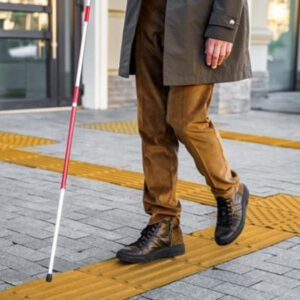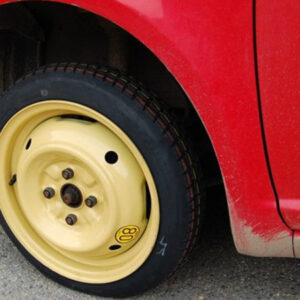
Low porosity hair is one of the major causes of stunted hair growth and breakage. Although certain behaviors can alter your hair’s porosity levels, this condition is mainly genetic. So, you’ve to learn how to manage it with the best hair growth products or other treatments. This article shows you how to take care of low porosity hair.
What Is Low Porosity Hair?

Low porosity hair refers to hair cuticles that lay flat and tightly on top of each other, preventing moisture from permeating effectively through the hair strands. When your hair cuticles are packed together tightly, they prevent natural oil from flowing down to the end of the strands. This causes dehydration of your hair and frothy ends.
Low porosity hair also prevents your hair from developing fully and makes it highly susceptible to breakage and dryness. It makes hair treatment ineffective because all your hair products will be stuck on the surface of your hair instead of being absorbed. That’s why you need to learn how to manage your low porosity.
Characteristics of Low Porosity Hair

Does your hair tend to fall flat and look dull even after treating it with the most expensive moisturizer, deep conditioner, or protein? Do you always have trouble getting your hair treatment products to flow down to the end of the strands? If yes, then you need to check if you have low porosity hair. Here are the main characteristics of low porosity hair.
1. Hair Products Sitting On Your Hair
As noted above, low porosity causes hair treatment products to sit on your hair because they can’t be absorbed. When you add natural oil or moisturizer to your hair and check it an hour later it will still be sitting on the surface of your hair. If you wipe your hair with your fingers, the product will come right off.
Unfortunately, when the oil gets stuck on the surface of your hair, it causes a buildup of dust and other impurities, making your hair susceptible to breakage and bacterial and fungal infections. It also makes your hair treatment costly because only a small amount of your hair product gets absorbed by your hair, thus forcing you to keep treating your hair repeatedly.
2. Prolonged Washing and Drying of Your Hair
When you have low porosity hair, it’ll take you longer to wash and dry it. This is because it’s difficult to make your hair wet. You have to use large amounts of water to get your hair wet. It’s also difficult to air-dry your hair when it has low porosity. Even if you use a blow dryer, it will still take longer to dry.
3. Poor Moisture Retention
With low porosity hair, your hair will lose moisture within a day, forcing you to treat it repeatedly. Since your hair doesn’t allow moisture to permeate through the fibers properly, it’s very easy to lose it. This also means that your hair will always appear dehydrated, even after moisturizing it.
When you touch your low porosity hair, it feels extremely dry and rough. If your hair can’t retain moisture, it’ll tangle easily and become more susceptible to matting.
4. Difficult to Color
It’s very difficult to dye low porosity hair because its cuticles are tightly sitting on each other, making it hard for the dye to soak through the fibers properly. You have to maintain a proper hair care routine that will open up and close your hair cuticles without a problem.
How Can I Test My Hair Porosity?

Please note that the different types of hair porosity are determined by the openness and closeness of hair cuticles. Although low hair porosity is a hereditary condition, some hair products, and styling practices can determine how closed or open your cuticles will be. Here are simple ways to test your hair porosity.
• Float test: this test involves placing a clean strand of your hair in a bowl of room-temperature water to see if it’ll sink. If it sinks immediately, your hair is likely high porosity. But if it floats for a while before sinking, then your hair is likely low porosity.
• Spray test: this test involves spraying your clean, dry hair with water and monitoring the results. If your hair is low porosity, it won’t absorb the water immediately or dry quickly. Also, there will be many visible drops of water on your hair half an hour later.
• Dynamic vapor sorption: this involves measuring the weight of your hair when it’s exposed to humid air. Unfortunately, this test can’t be done at home.
• Swelling fiber: this test involves soaking your hair in water and measuring the dimension of its fiber. This test should be done by a professional.
• Gas absorption and pore size analysis: this involves exposing part of your hair to nitrogen and monitoring how the gas is absorbed by the hair and the size of the pores in your cuticles.
What Causes Low Porosity Hair?

In the past, people believed that the problem of low porosity hair was caused by unfavorable environmental factors. But scientists have refuted this claim, affirming that low porosity hair is a hereditary condition. Therefore, you can only inherit this condition along with other characteristics of your hair.
But certain hair styling practices and products can exacerbate the problem of low porosity. For instance, damaged hair and aging can worsen your low porosity hair. Since low porosity hair is a hereditary problem, it’s not easy to reverse. But it can easily be managed.
How to Take Care of Low Porosity Hair: 8 Tips

Since you can’t completely treat your low porosity hair because of its hereditary nature, you can only learn how to manage it. Here are effective ways to take care of your low porosity hair.
1. Deep-Conditioning with Heat
Low porosity hair has tightly layered cuticles that prevent moisture from penetrating through the fibers. Fortunately, heat has proved to be quite effective in opening up these cuticles. So, you can bathe with warm water to open your hair cuticles before deep-conditioning it.
This helps to open your hair cuticles so that they can easily absorb the moisturizer. You can also use a heat hair cap to open your hair cuticles. Some people also use simple shower caps because they help them to retain their body heat.
2. Applying Lightweight Oils
One of the major characteristics of low porosity hair is the inability to absorb hair oils. Fortunately, now there are lightweight natural hair oils that can permeate through closed cuticles. Some of the common natural lightweight oils that you can use on your low porosity hair include almond oil, argan oil, and so on.
3. Steaming
Steaming applies heat to your hair to open the closed cuticles, allowing moisture to flow freely through your hair strands. The vapor moves through the strands quickly and penetrates your hair easily. It also helps to hydrate your hair products more effectively.
You should steam your hair when applying any conditioner or hair styling products to help them reach the core of your hair. When you take a hot shower, don’t turn on your fan immediately. Give the steamy air some time to prep your hair before you apply your hair conditioning or styling products. You can even use a steamer to prep your low porosity hair.
4. Avoid Heavy Hair Styling and Conditioning Products
Heavy hair styling and conditioning products like butter and cream are quite tough for low porosity hair because they can’t get absorbed easily. So, they’ll sit on the surface of your hair, causing a sticky feel and a buildup of impurities on your hair.
5. Using Protein Cautiously
Although protein strengthens hair cuticles, you shouldn’t use it excessively on your low porosity hair because this type of hair is highly sensitive to protein. It can also make your hair stiff and delicate. Therefore, your hair will be susceptible to breakage.
6. Treating Your Hair Regularly
Since most of the hair products you use on your low porosity hair get stuck on its surface, it’s very easy for dirt and other impurities to build up on your hair, giving it a cakey and sticky feel. Therefore, you should treat your low porosity hair regularly to prevent this buildup. For instance, you should cleanse your hair with hydrating shampoo that offers deep cleansing without removing hydrating oil from the hair.
7. Using Water-Based Hair Products
Since water-based hair products are lightweight, they can permeate through tightly closed cuticles easily, allowing moisture to get to the core of your hair. You can know if your hair products are water-based by checking their labels.
8. Avoiding Silicone
Silicone products are risky because they develop a hydrophobic cover that bars hydrating and conditioning ingredients from moisturizing your hair strands. These are synthetic ingredients that can cause serious medical problems.
Things to Avoid When You Have Low Porosity Hair

Be careful when taking care of your low porosity hair because there are certain hair products and styling practices that can worsen the condition. Here are some of the things to avoid when caring for your low porosity hair.
1. Leave-in Conditioners
As noted above, low porosity hair is highly sensitive to protein. Therefore, avoid hair products that come with large amounts of protein. Unfortunately, most leave-in hair conditioners have large quantities of protein because they’re meant to strengthen your hair cuticles. So, they aren’t suitable for your low porosity hair.
2. Heavy Products
Since low porosity hair has tightly closed cuticles, using thick products like butter and cream will only stiffen the cuticles further, making it hard for moisture and oil to permeate through your hair fiber. These products will also cause more buildup of impurities on the surface of your hair.
3. Drying Alcohol
You shouldn’t use drying alcohol on your low porosity hair because it will cause further drying and damage to your delicate hair. So, make sure the hair conditioner, shampoo, and other styling products you buy don’t have alcohol.








